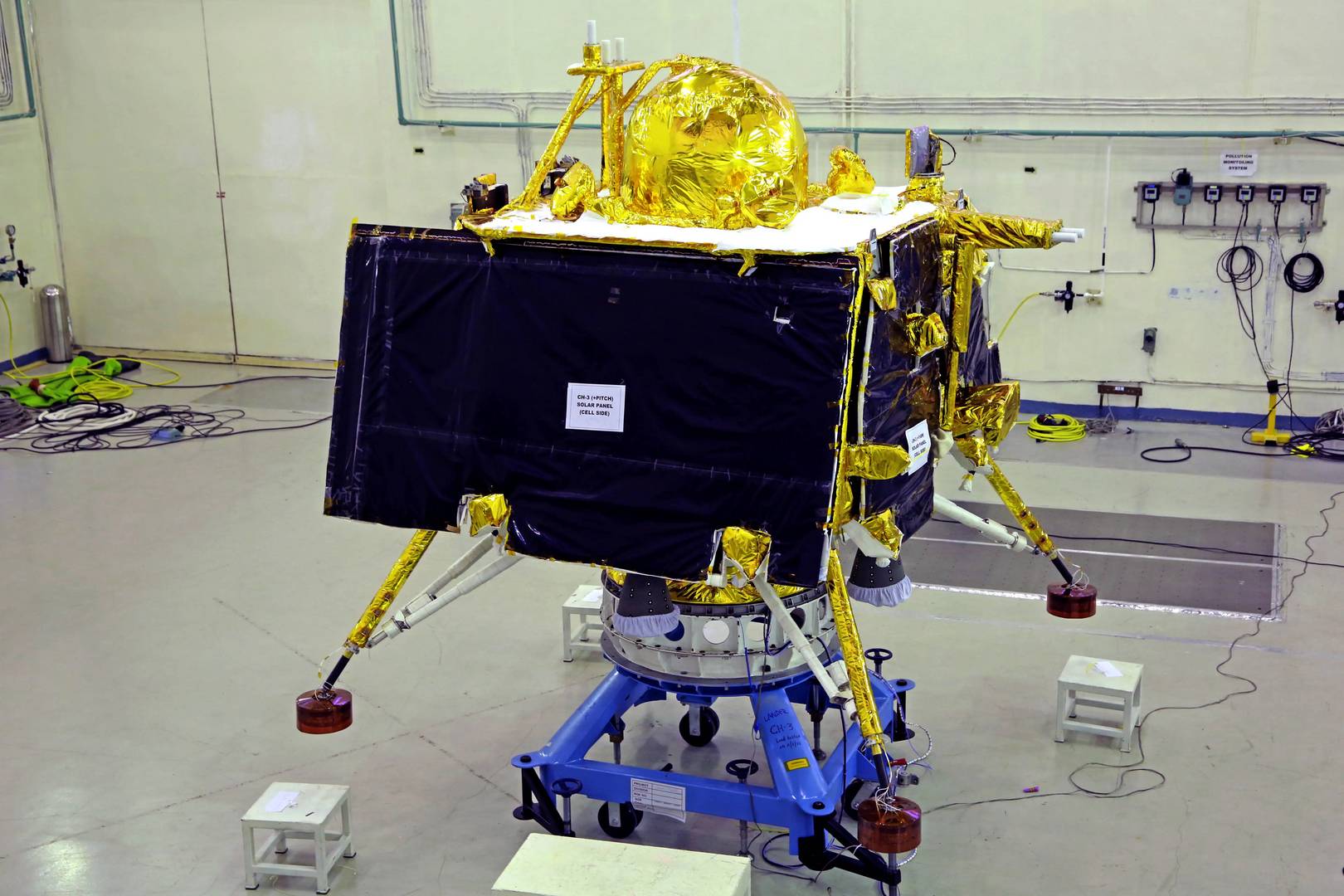
The record for minimum disturbance on the lunar surface was set by the lander of the Indian lunar mission Chandrayaan-3 (“Chandrayaan-3”) as a result of a unique tuning of the engines, said Suresh Kumar, a scientist at the Center for space. Indian Space Research Organization (ISRO) applications at the lunar and planetary sciences conference in Texas on March 19, reports The Times of India.
During the descent phase of a spacecraft, lunar dust is often dispersed due to engine exhaust gases interacting with the surface. Suresh Kumar showed images from Chandrayaan-3’s cameras taken before and after landing, which captured minimal dust plumes just 19 meters above the lunar surface, setting a new record for the least disturbance during a lunar landing compared to previous missions.
Analysis of pre- and post-landing images by Suresh Kumar and his team showed that the spacecraft covered an area of about 145 square meters with settled dust, which also exceeded initial estimates.
The successful landing was due to unique tuning of the engines, which maintained less thrust, reducing surface disturbance. Additionally, the lander’s engines were located in a diagonal configuration, which reduced the impact on the lunar surface.
Pratim Das, director of ISRO’s Science Program Office, spoke about the rover’s activities on the lunar surface, including detecting sulfur, walking around craters and sampling regolith at various locations. A seismometer on board the rover recorded several lunar events, and a thermal probe provided information on the temperature of the lunar soil at different depths.
Recall that the Chandrayaan-3 automatic space station was launched on July 14, 2023 from the Earth’s surface. On August 5, it entered lunar orbit and on August 23, it successfully landed on the lunar surface. The Vikram spacecraft undocked from Chandrayaan-3 and landed at the south pole.
It should be noted that India is preparing for the next lunar mission, Chandrayaan-4, scheduled for 2028. The goal of the new mission is to deliver lunar rocks to Earth.
Source: Rossa Primavera
I am Michael Melvin, an experienced news writer with a passion for uncovering stories and bringing them to the public. I have been working in the news industry for over five years now, and my work has been published on multiple websites. As an author at 24 News Reporters, I cover world section of current events stories that are both informative and captivating to read.
